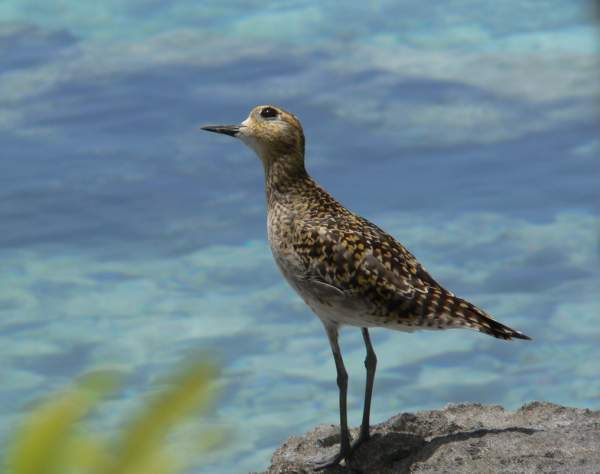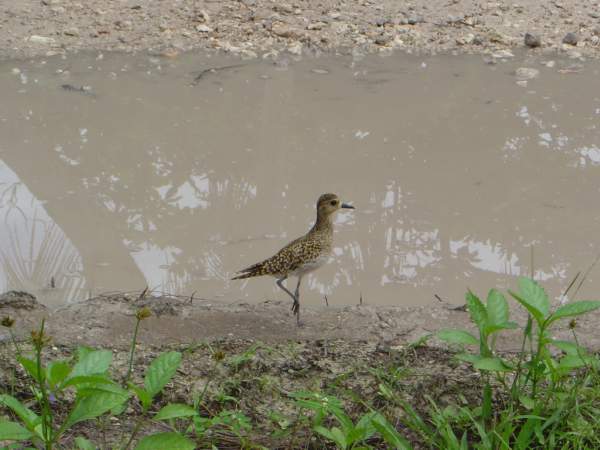Published in the Ocean Watch column, Honolulu Star-Advertiser © Susan Scott
December 12, 2008
For years, Montana biologist Wally Johnson has been studying Hawaii’s kolea (Pacific golden plovers).
This past summer, Johnson and colleagues banded 30 kolea nesting near Nome, Alaska. Some of those shorebirds are now at Punchbowl and the Veterans Cemetery in Kaneohe.

Johnson is keeping track of those individuals but would love to find more.
The birds have bands on both legs, one metal and four colored red, white, blue or green. If you see a kolea with colored bands on its legs, note the order of the bands if possible and e-mail the information to owjohnson2105@aol.com.
One of Johnson’s Nome-banded kolea surprised researchers by going to Hiroshima, Japan. It might be a fluke, but it’s also possible that some Alaska kolea use the East Asian Flyway, also known as the Australasian Flyway, during their migrations.
This avian freeway runs from north of the Arctic Circle in Alaska and Russia, through East Asia to Australia and New Zealand. About 50 million shorebirds, ducks, geese and swans fly the 22-country corridor annually, some covering 15,000 miles round trip each year.
Most migratory birds stop along the way for rest and refueling, but not all. A brown shorebird called the bar-tailed godwit, which bears a long, slightly curved-up bill, uses the highway only once during its amazing round-trip journey.
Researchers from the U.S. Geological Survey recently attached tiny satellite transmitters to 23 godwits, some heading north and some heading south, and made discoveries beyond expectations.
When the birds flew from New Zealand to Alaska, all went nonstop to the Yellow Sea, most to a Chinese wildlife refuge there. (The Yellow Sea is the body of water between Korea and China.) From there the birds continued nonstop to their Alaska breeding grounds.
On the way back though, in autumn, the plumped-up, 1.5-pound birds, 55 percent of that fat, skipped the Yellow Sea, which is 2,280 miles out of the way, and flew back to New Zealand directly over the Pacific Ocean.
The study had a superstar: A female called E7 (she deserves a better name, say, Amelia) flew from Alaska to New Zealand, about 7,250 miles, nonstop in just over eight days. The other tagged godwits weren’t exactly slackers. They stopped only briefly on several South Pacific islands, mostly, the researchers thought, because of bad weather.
The bar-tailed godwit has set new records for extreme performance among vertebrates, including humans.
On their way south from Alaska, about 100,000 bar-tailed godwits pass over the Hawaiian Islands, but we won’t likely see any. Over a 35-year period, only 40 bar-tailed godwits have been recorded in Hawaii.
Why don’t these birds stop to rest and eat? No need. These amazing birds manage extraordinary levels of exercise, potential dehydration and sleep deprivation, all while navigating enormous distances over open ocean.
And they might be even more efficient than we know. These birds, after all, carried tracking instruments.
If you see a banded kolea somewhere other than the two cemeteries mentioned above, Johnson writes, he “would be ecstatic to hear from you.” And if you spot a bar-tailed godwit in the islands, a lot of people would be ecstatic. Call the Hawaii Audubon Society at 528-1432.
